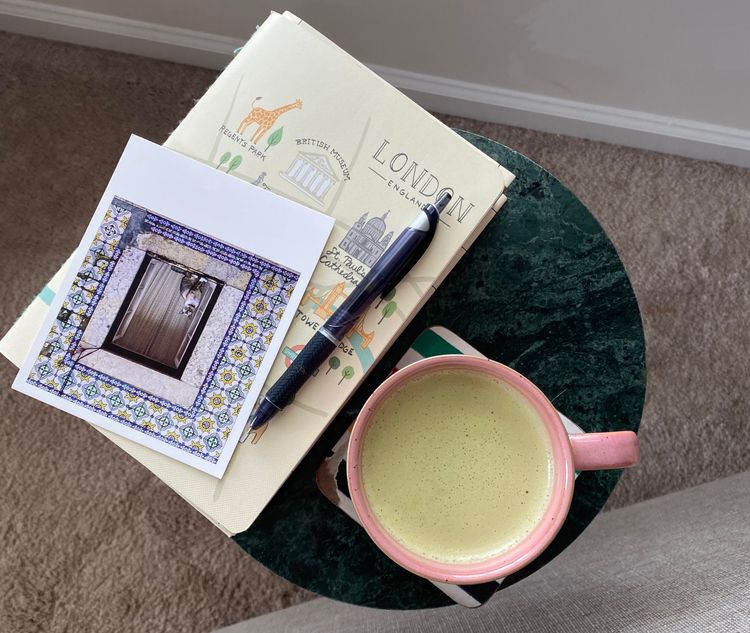How To Send The Perfect Email Intro

Find a template below you can copy/paste and make your own.
The principle of sending an email intro is straightforward. You know two people who don’t know each other but seem to have aligned interests. You set them up to discuss in an email thread. The idea is the intro leads to a transaction that benefits both.
It can be as simple as seeing two friends on your feeds: one is looking for a room, and the other is looking for a roommate. You message them both at the same time, and hopefully, you've solved two problems with one connection.
This is technically not a complicated ask. What’s tricky here is navigating social dynamics.
1. Get consent from both parties
2. Make the case, in the email, why this connection makes sense
3. The hardest part: that's it. No follow-up questions.
In fact, while it’s only a three-step process, don’t underestimate how critical each component is – and only becomes more so as you progress in your career.
If you know someone ‘who is a big deal,’ you’ll already know there’s an asymmetry in which way the intro-requests flow. You don’t want to be known as the person who hands out the email address of a high-profile professional or an artist. That’s why getting consent before an email is ever sent is as critical as the email itself.
A warm email
This is known as a ‘warm email’, when two strangers connect via a trusted shared contact, often with a very specific ask. Warm email intros fuel opportunities like work, interviews, travel, gigs, and even investments.
These can produce huge value for both parties — and you as well. Being the person who sets up a successful transaction definitely earns you some points and is often an overlooked part of networking. It's more delicate than it is complicated. The trick is in understanding why it might make sense for the two people to connect in the first place.
And that's the trick: it has to make sense for both of them.
In my work in the tech industry, this was critical to get right. In my current role in the music industry, however, this is an integral daily part of the job. Music is a people’s business with collaborations across companies, organisations, and even countries built in. Everyone is always looking for something or someone, and being able to provide value in people’s crowded inboxes is golden.
The Process
Step 1: Consent from both parties
Before you even start, make sure you have consent from both parties to make this intro. In the case of the room/roommate situation, the stakes are low, and both are on fairly equal standing.
In the business world, there's an added factor of status that creates an extra dimension to navigate. This is especially true in music where not just artists are rockstars but also journalists, iconic labels, managers of celebrities, and many other personalities who don’t want to open the gates of requests from the masses in their already tricky-to-manage communication channels.
There tends to be 'an askee' and 'an asker', i.e. one person who wants something and one person who is being asked to provide something.
EXAMPLE. Let’s say you know a band from your hometown and a music journalist in the big city you live in. It might be tempting to connect those two as it makes sense in your mind.
But there's asymmetry to the roles there, the band might desperately be trying to get valuable coverage while the journalist gets 40 requests a day like that. If the journalist is your friend, you’ll quickly learn not to bombard them with unwanted requests for coverage like that.
However, let’s say you happen across Beyoncé somewhere? The tables then turn. The journalist would be eager to interview her – whereas she probably doesn't need another interview. If she wants to, though, set it up.
Step 2: Make the case in the email
Here’s where it feels like it’s easy to skip writing a thorough email since you already talked to both parties about this connection – and the context to you seems so obvious. Trust me, it will not read obvious to the receiver, so making the case why this connection makes sense needs to happen in the email.
This is not the time to assume any shared knowledge. Definitionally these are people who don't know each other, so lay out each person's relevance to the task at hand, ideally in the most flattering way possible. Consider adding how this person relates to you as well.
Make sure all the information both parties need in order to proceed is in the email.
EXAMPLE with Joe – Music Journalist, and Anne – Artist from an R&B band you know from home
“Hi Joe and Anne,
Joe, I told you about running into R&B vocalist Anne at Music Festival/Conference, where her band was buzzing. They are releasing an album early next year, and I actually know her from my hometown!
Anne, Joe works at a music publication, and they were really curious about your music and would like to know more. Since we met a couple of years ago, he has already written some great features on [artists we both know].
Joe is looking to feature an up-and-coming artist in their music publication and I thought Anne’s band could be a good candidate to consider since there’s a lot of momentum happening around them now, including the album coming out, international coverage (see links here and here) as well as an almost sold out tour (tickets here).
I hope this leads somewhere exciting! Best, Habbi"
Both parties will be reading the intro message, so 'you' becomes too confusing. The slight awkwardness in the copy is worth it for clarity and also for both parties feeling like their equally being introduced to each other, and not just one person benefitting.
This is why getting consent from both parties is so important from the beginning, as that’s when you can get a clear sense of what the ask is. Include the ask in the email so both parties can get straight to business.
Step 3: No follow-up from you
Tell both parties that the intro has been sent.You should have been communicating with both loads anyway to make sure you have consent, know how to reach them (get their preferred email address), and learning what the ask for the intro is.
And now for the hardest part: that's it.It is actually none of your business what happens next. If either party wants to tell you, great; but they're on their own now. You've done the best to set up a successful connection, but the details of what's next are entirely at their discretion to share, and the classy move is to not ask.
Maybe it went wrong, or maybe something happened – just don't ask. It’ll come back to you if it went well, no doubt about it.
Intro Template
INTRODUCING EACH PERSON
When you explain who someone is, make it flattering and make it relevant. By doing that in both directions and with clarity, they can get straight to the task at hand and don't have to try to figure out why this introduction was being made in the first place.
- State your relationship to each person
- 1-2 sentences about person 1
- 1-2 sentences about person 2
STATE THE PURPOSE OF THE INTRODUCTION
If you’ve done your job well in the first part, the purpose should feel like a natural conclusion. Put all relevant material like links / more context into the email, so it’s there for future reference.
- State the intent of the introduction as clearly as possible
“This artist wants coverage in your publication”
“I saw you’re looking for a new roommate, and my friend is just moving into town” - Give it your blessing, if you will, something like
"I hope this will lead somewhere interesting"
"I'm excited for you to connect on this" - Sign off
Thanks for reading to the end!
That’s it! While it is delicate, it is also extremely rewarding. Seeing two talented people connect on a new endeavor and knowing you played a small but critical role, there is a kind of thrill. Since this is an exciting thing, my last little bonus tip at the end is to not take it too seriously.
I only feel comfortable introing people I know who would receive it well, so this is a fun thing. And while I never compromise on the process, the tone can be buzzing with energy and excitement.
I believe our future will only ever include more collaboration with people we have never met as we work on solving more complex problems. Collaboration requires clear and concise communication, so mastering the intro is the perfect place to set yourself up for that future.






Member discussion